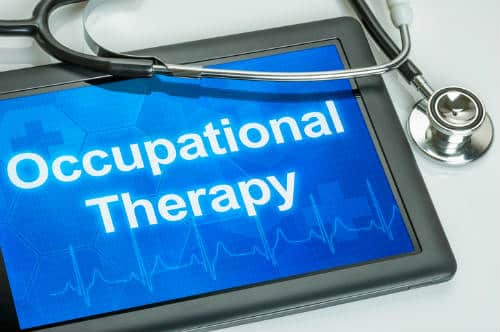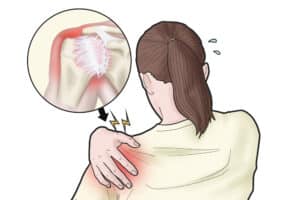Occupational Therapy

What is an Occupational Therapist?
That’s usually the first question people have – what is an occupational therapist? They are also called an OT.
OTs develop individual and group programs with people affected by illness, injury, developmental disorders, emotional or psychological problems and aging to maintain, restore or increase their ability to care for themselves and to engage in work, school or leisure. They also develop and implement health promotion programs with individuals, community groups and employers (from the Canadian National Occupational Classification 2016).
They can have a variety of titles – clinical occupational therapist, community occupational therapist, home care occupational therapist, occupational therapy consultant, research occupational therapist etc.
What does an Occupational Therapist do?
From day to day, what does an OT do?
An OT will find out what clients cannot do, and what they would like to do. They are reviewing your ability to perform everyday activities successful and effectively.
Things that an OT may check:
- Look at your physical abilities like balance, strength, and coordination
- Mental abilities such as memory, coping strategies, or organization skills
- Items you use to participate – clothes, furniture, tools, or utensils
- What social and emotional support is available to you at home, at school, at work, or in the community
- The physical set up of your home, work, classroom, or other environment
OTs are problem solvers. There are a number of things they can do.
Help someone overcome a disability:
- They can educate or instruct you on how to do things with the abilities you have – like getting around your house in a wheelchair
- They can suggest activities that will help you improve or maintain the abilities you have – e.g. improving your coping strategies
OTs can adapt the materials you use:
- Could install a grab rail near the bed for you to use
- Introduce new materials, like a chunky pen, if you have difficulty grabbing small items
- Adding items like an electric toothbrush or electric can opener
- Introduce new fixtures like a raised toilet seat
- A device to help you turn the pages of a book
They can recommend changes to the environments where you do your everyday activities:
- Possibly adding a ramp, so an area can be accessed by a wheelchair
- Fitting a stair lift into your home
- Recommending the lowering or raising of a desk – so it is easier to use
- Clearing up clutter, or reorganizing your cupboards so you can safely move around and reach what you need
If you are injured, how can an Occupational Therapist help you?
For people who have been in a car accident or a pedestrian accident, an OT can help you.
Occupational therapists work in facilities, in private practice, in hospitals, and some are self-employed. They provide assessment and treatment, during recovery from vehicle accidents, pedestrian accidents, and bicycle accidents.
They are experienced in handling a variety of cases. These include individuals who have survived accidents but may have physical or cognitive challenges in their lives as a result of their impairment or disability, including brain injuries, spinal cord injuries, amputations, chronic pain, and mental illness.
Occupational therapists can assist by completing the necessary forms for assessment and treatment plans. Then they can work to improve an individual’s function – at various points during recovery. An occupational therapist helps with the recovery process, from discharge from the hospital to resuming normal life activities. A case manager may be assigned to coordinate all the services that may be needed (such as the medical and rehabilitation professionals).
How can you find an Occupational Therapist?
If you are in British Columbia, it is not difficult to find an occupational therapist. One way to do some quick searching is through the College of Occupational Therapists of British Columbia — https://cotbc.org/. They have a search feature on this page. You can call them at 1-866-386-6822 (toll free in B.C.), and you can email them at info@cotbc.org as well. After doing a few quick searches, there are occupational therapists throughout the Lower Mainland. Several of them work in multiple clinics as well.
Occupational Therapists, who are registered with the College of Occupational Therapists of B.C., have to follow a Code of Ethics, and that is also available on the website (https://cotbc.org/).
References:
The National Occupational Classification – 2016 edition http://noc.esdc.gc.ca/English/NOC/SearchIndex.aspx?val=3&val1=3143&ver=16&val65=occupational+therapist (updated on April 20, 2017)
The College of Occupational Therapists of British Columbia. https://cotbc.org/ (Copyright 2015)
Canadian Association of Occupational Therapists. How does Occupational Therapy Help? https://www.caot.ca/site/aboutot/howOThelp?nav=sidebar (updated 2016)
NHS Choices (The National Health Service – UK). Occupational Therapy – Techniques and Equipment http://www.nhs.uk/Conditions/occupational-therapy/Pages/techniques-and-equipment.aspx (August 2014)
ModernOT (based in Ottawa, Ontario). Case Managers & Certified Life Care Providers http://modernot.ca/our-team/case-managers-certified-life-care-providers/ (Copyright 2017







